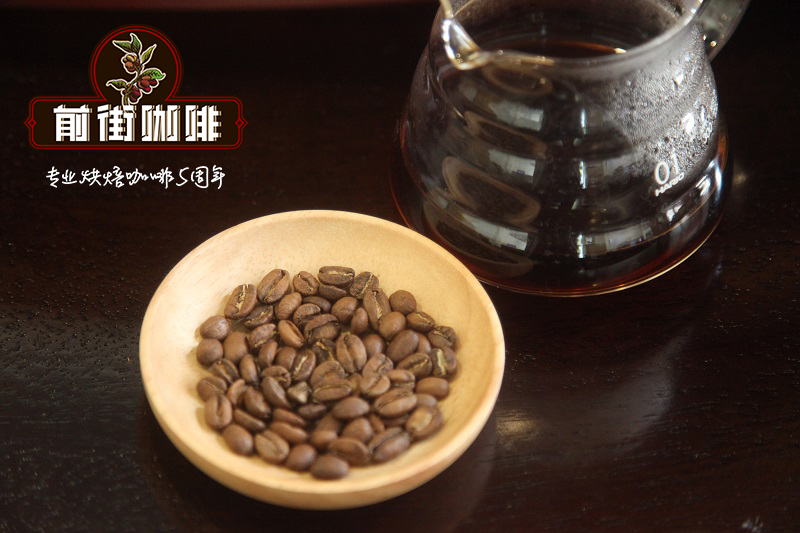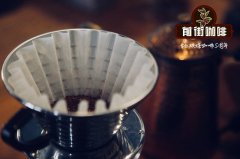Kenya AB Komatina-Coffee beans washed with cranberries difference between Kenya AB and Kenya AA

Professional coffee knowledge exchange more coffee bean information please follow the coffee workshop (Wechat official account cafe_style)
Flavor description: caramel, orange acidity, cream texture
Moisture content: 8.9
Density: 886g/l
Photos of raw beans
Kenya AB
Country: Kenya
Area: Kyambu
Micro-area: Gitwe
Soil: volcanic clay
Altitude: 1400 m-1800 m
Variety: Arabica
Bean species: SL-28, SL-34, Ruiru 11
Treatment: washing
Kenya AB originated from Kenya's open auction system, and the price of the coffee involved in the auction is higher than that of other coffee, but its quality and transparent access are highly praised, which makes up for the slightly higher price. Most coffee grows in the fertile foothills of Mount Kenya. Farmers own a small area of land, which is usually measured by the total number of trees on a piece of land, which means that producers often have more autonomy to strategically pick fresh coffee fruit. and can deliver the most mature fresh coffee fruit to local factories (wet treatment plants). Factories generally have abundant water resources for fine washing, including soaking coffee beans in fresh water for a long time to consolidate the unique Kenyan flavor.
The difference between Kenya AB and Kenya AA
The quality of Kenyan coffee is strictly controlled, and it is divided into AA,AB,C,E,PB,TT,T,ML,MH according to size, particle and shape. These grades mainly distinguish the shape and size of beans, but not absolutely represent the quality of beans. Many people believe that beans with larger grains contain more oil that produces the aroma of coffee, and because of this, beans with larger grains are more expensive in the market.
Take Kenya's AA as an example. In the same grade of beans, the highest grade is manor beans, followed by "+". Then, according to the general AA,AB grade, the AA,C grade is smaller, and the E grade is extra-large elephant beans. TT, T, ML, and MH are local non-flowing beans.
PB (Peaberry Dou)
In particular, round beans (PB) are usually produced at the end of coffee trees that bloom too late or too early. Because the yield is rare, accounting for only 10% of the output, the round beans produced by the same coffee tree are more expensive than other flat beans (Flat Bean). When round beans are specially collected together, defective beans are mostly removed, the proportion of defects is reduced, and the particles tend to be more consistent, making the baking more uniform and taste improved.
As for the distinction of quality, Kenya uses the digital grading method to distinguish the quality of coffee, but this digital grading method is not much publicized, so few people know about it. Therefore, the classification is based on particles, and the PB with different shapes is about the same as AA, but if it is manor or +, it is two or one grade respectively. For example, AB manor beans are about the same as AA+ and PB+.
Due to the different production conditions every year, it will directly improve the quality of coffee beans, grading is for reference only.
Important Notice :
前街咖啡 FrontStreet Coffee has moved to new addredd:
FrontStreet Coffee Address: 315,Donghua East Road,GuangZhou
Tel:020 38364473
- Prev

Boutique coffee beans Yega Jin Lena Amba Town Xilinga Village beans are special, how to drink well?
Professional coffee knowledge exchange more coffee bean information please follow the coffee workshop (Wechat official account cafe_style) Ethiopia Yega Xuefei G1 Jinrina Amba Town Xilinga Village LOT 6 washing boutique coffee is popular these years, the division of Yega Xuefei sub-producing areas is familiar to all, the main distinction is the town of Kochere and YirgaCheff.
- Next

The story of the three Aguirate brothers, Verasaki, red wine, fermented sun coffee, Aguilet.
Professional coffee knowledge exchange more coffee bean information please follow the coffee workshop (Wechat official account cafe_style) cup test description: 88 Cherry, Red Wine, jackfruit, Plum, Melon 70 years ago, Don Edgar Aquilette (Don Edgar Aguilera) built the first coffee factories in Costa Rica, he did not think that in the future his children would start a project to make
Related
- Detailed explanation of Jadeite planting Land in Panamanian Jadeite Manor introduction to the grading system of Jadeite competitive bidding, Red bid, Green bid and Rose Summer
- Story of Coffee planting in Brenka region of Costa Rica Stonehenge Manor anaerobic heavy honey treatment of flavor mouth
- What's on the barrel of Blue Mountain Coffee beans?
- Can American coffee also pull flowers? How to use hot American style to pull out a good-looking pattern?
- Can you make a cold extract with coffee beans? What is the right proportion for cold-extracted coffee formula?
- Indonesian PWN Gold Mandrine Coffee Origin Features Flavor How to Chong? Mandolin coffee is American.
- A brief introduction to the flavor characteristics of Brazilian yellow bourbon coffee beans
- What is the effect of different water quality on the flavor of cold-extracted coffee? What kind of water is best for brewing coffee?
- Why do you think of Rose Summer whenever you mention Panamanian coffee?
- Introduction to the characteristics of authentic blue mountain coffee bean producing areas? What is the CIB Coffee Authority in Jamaica?

